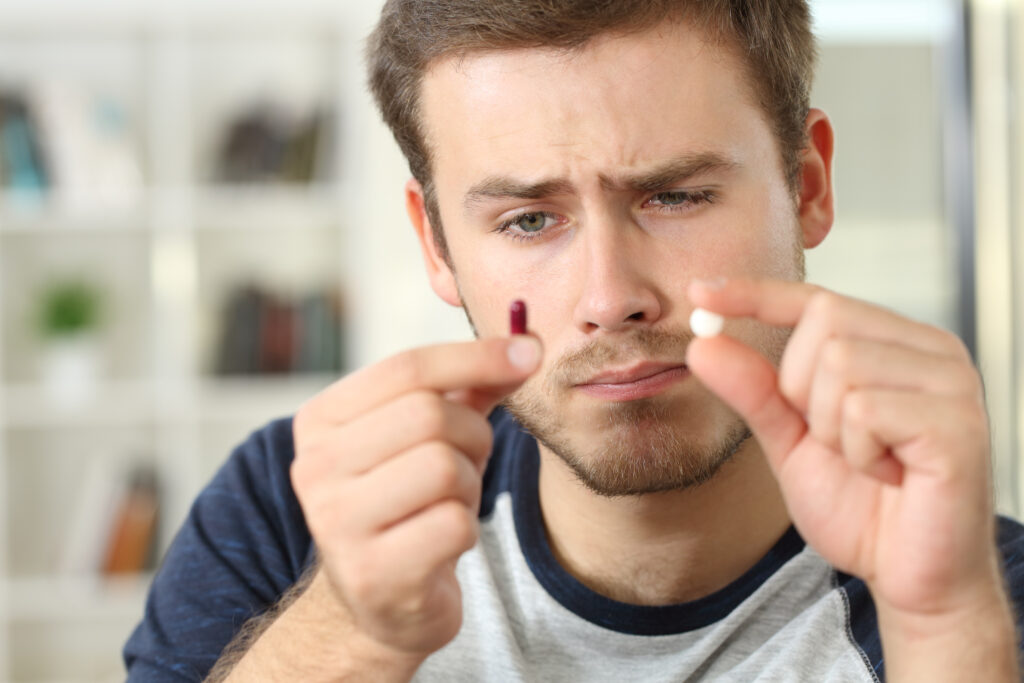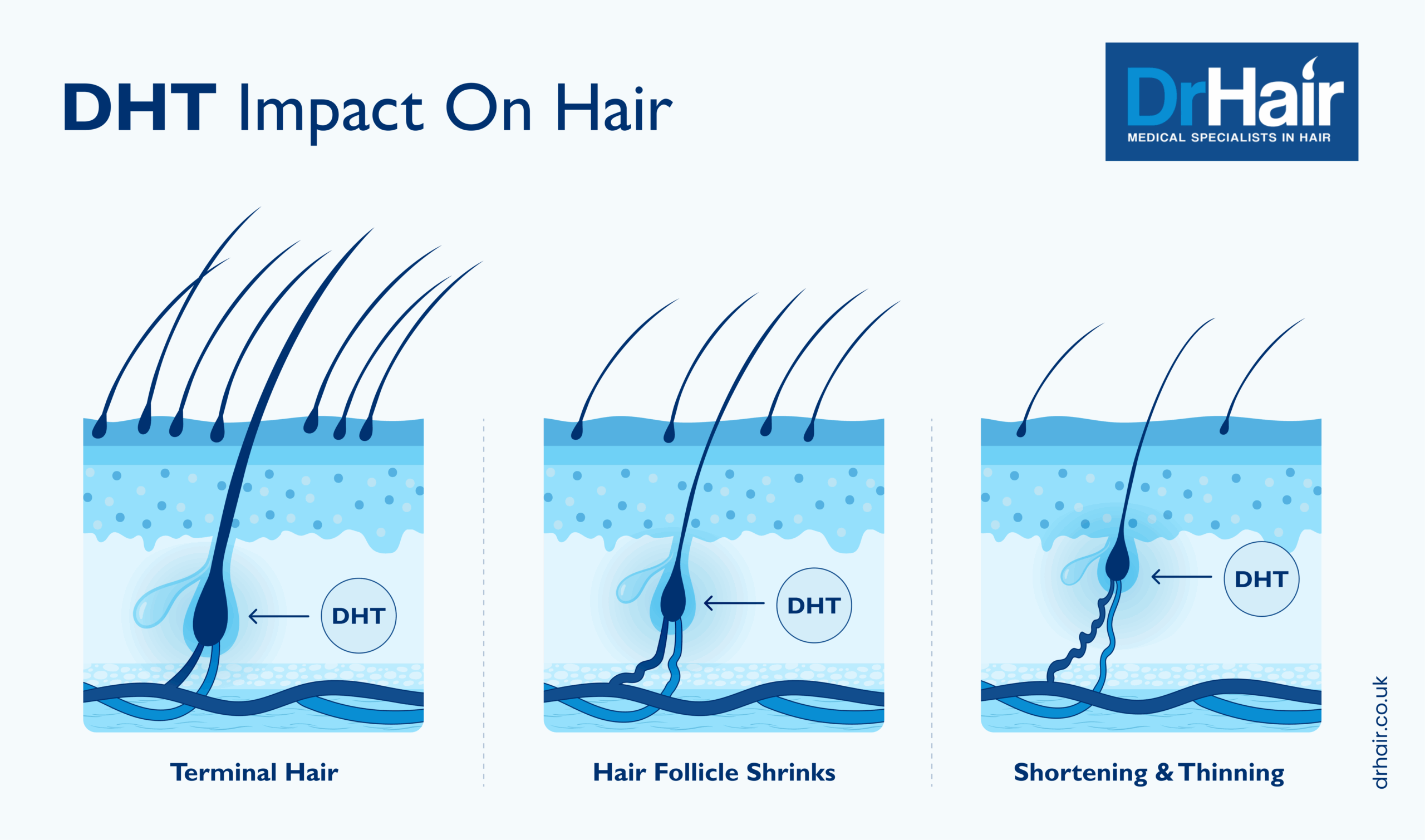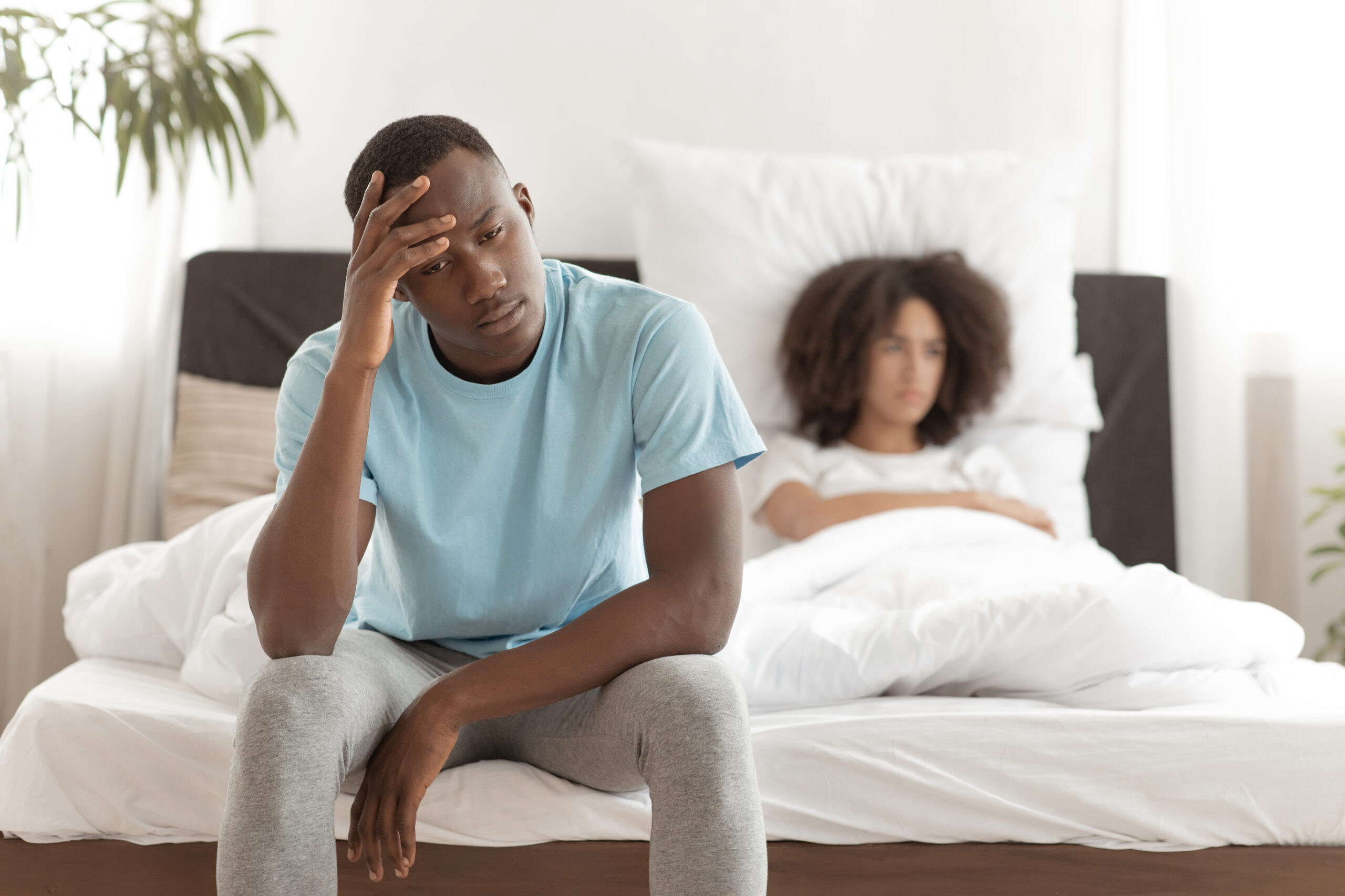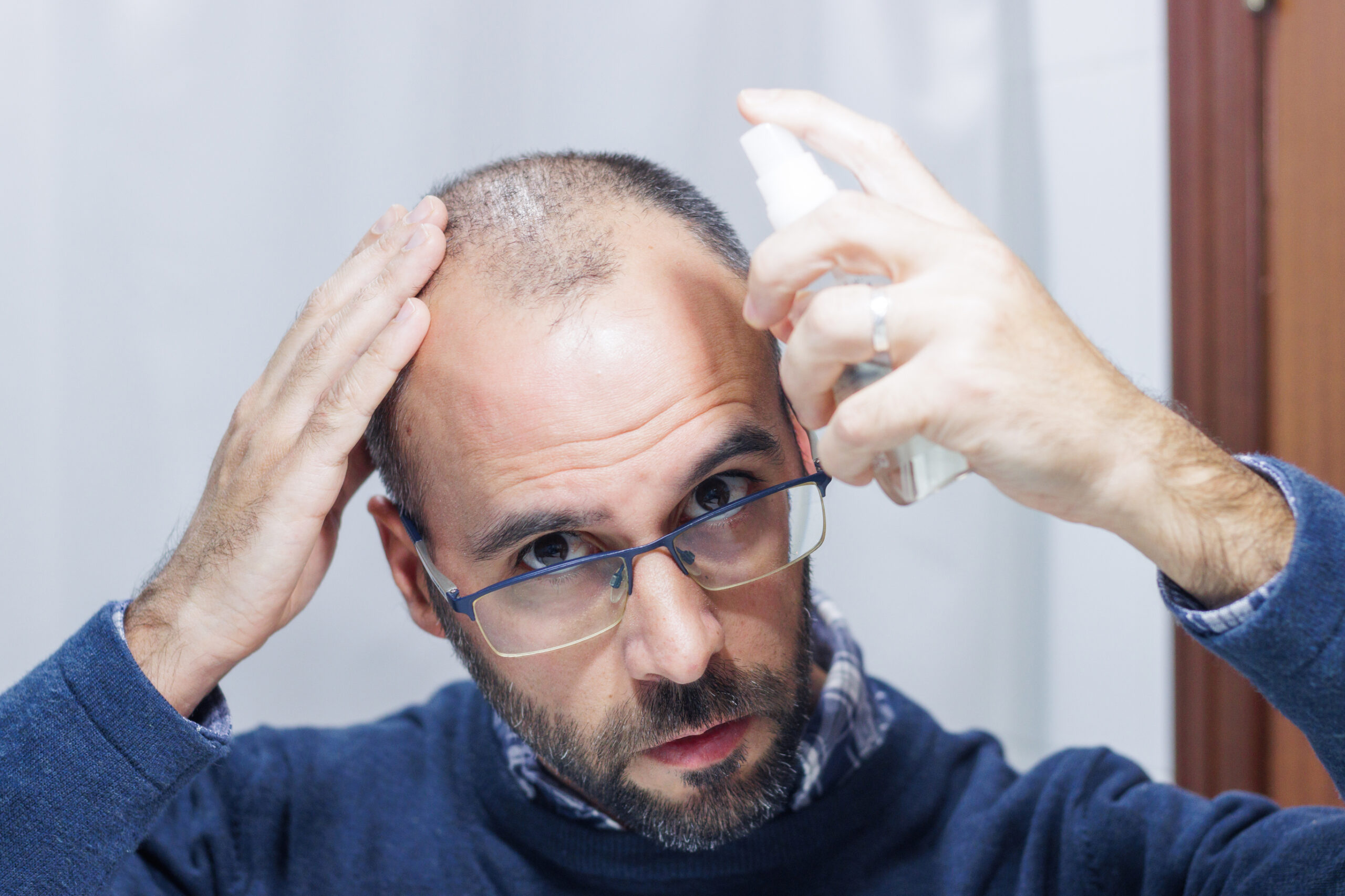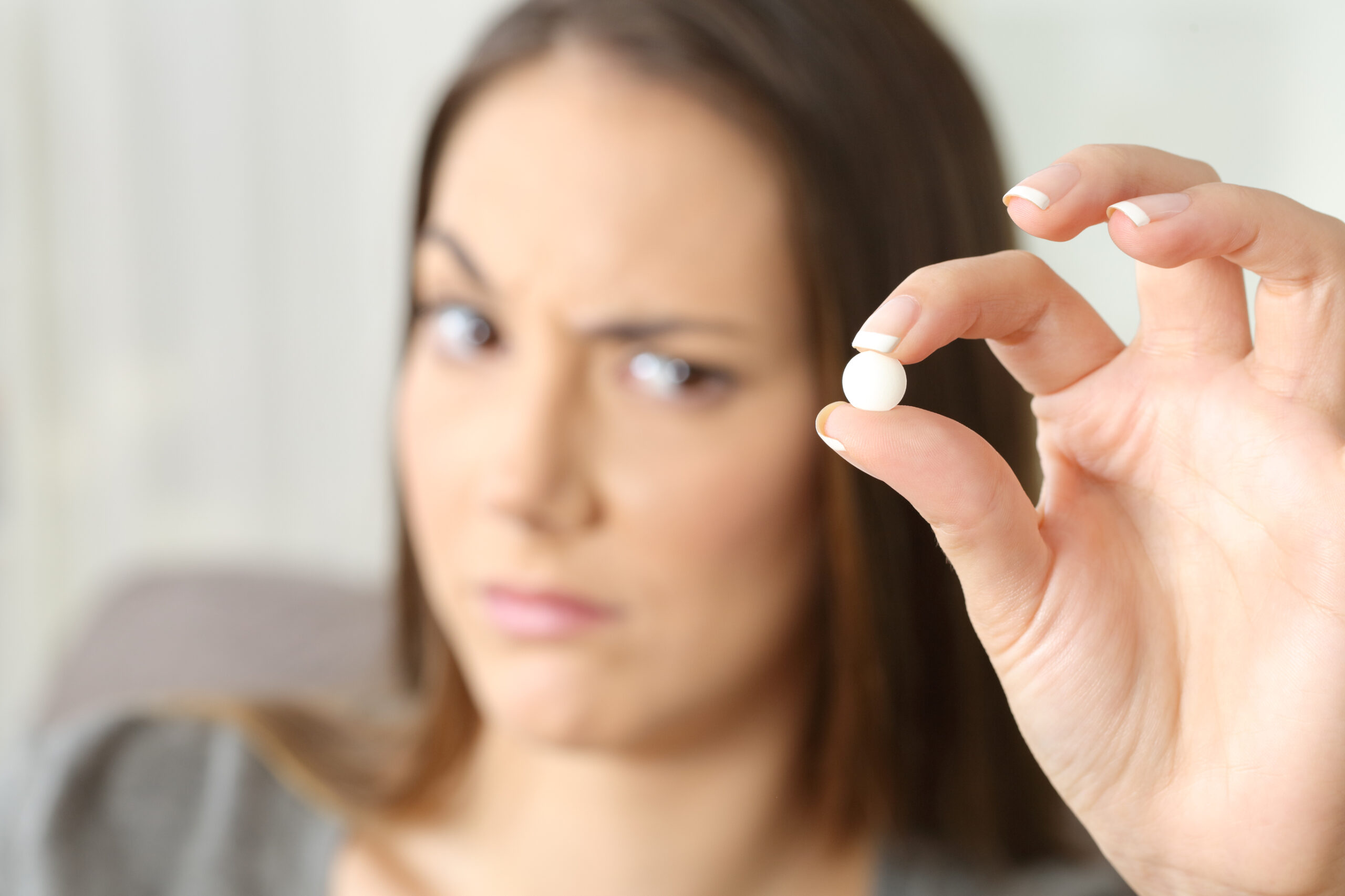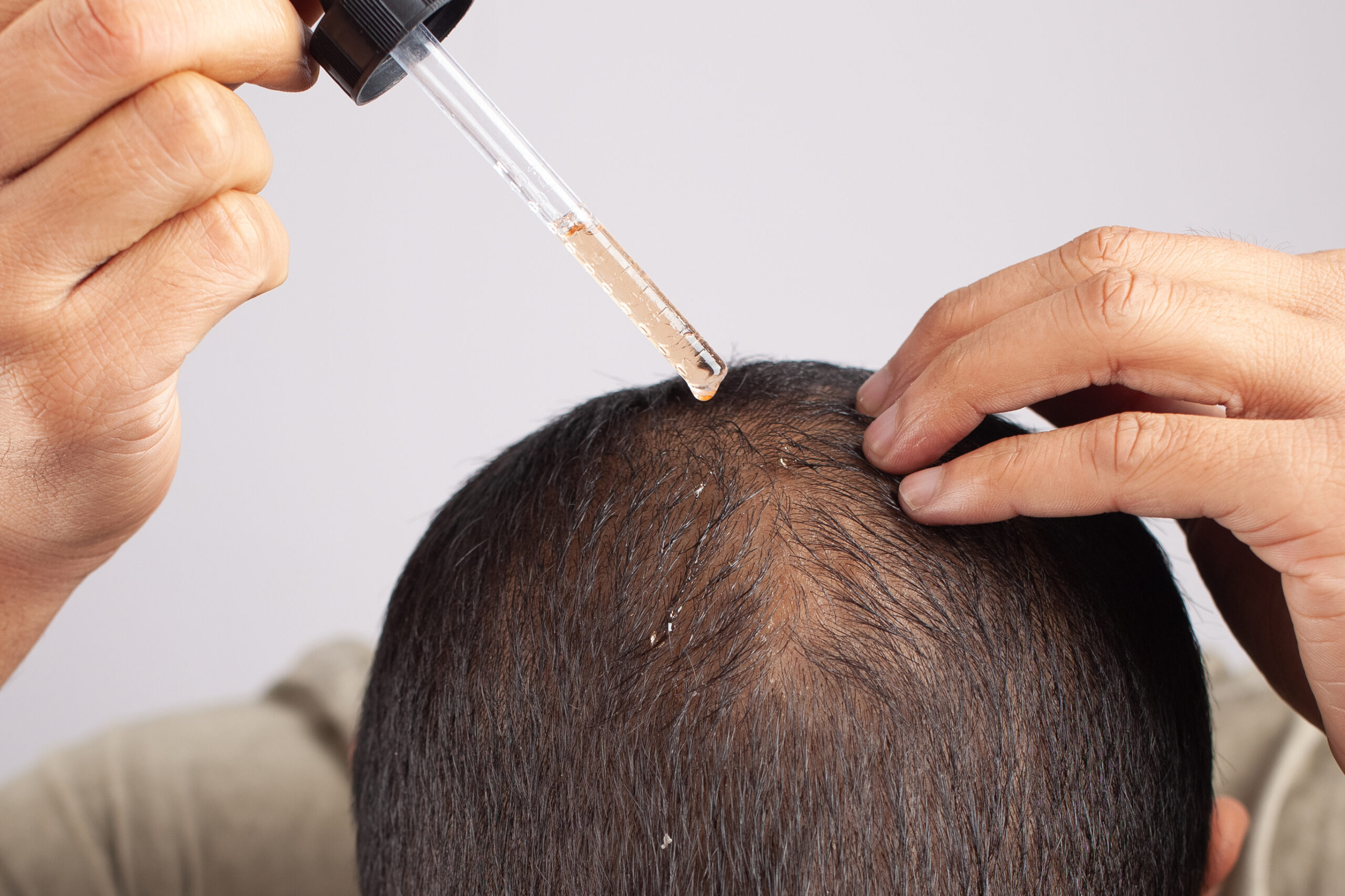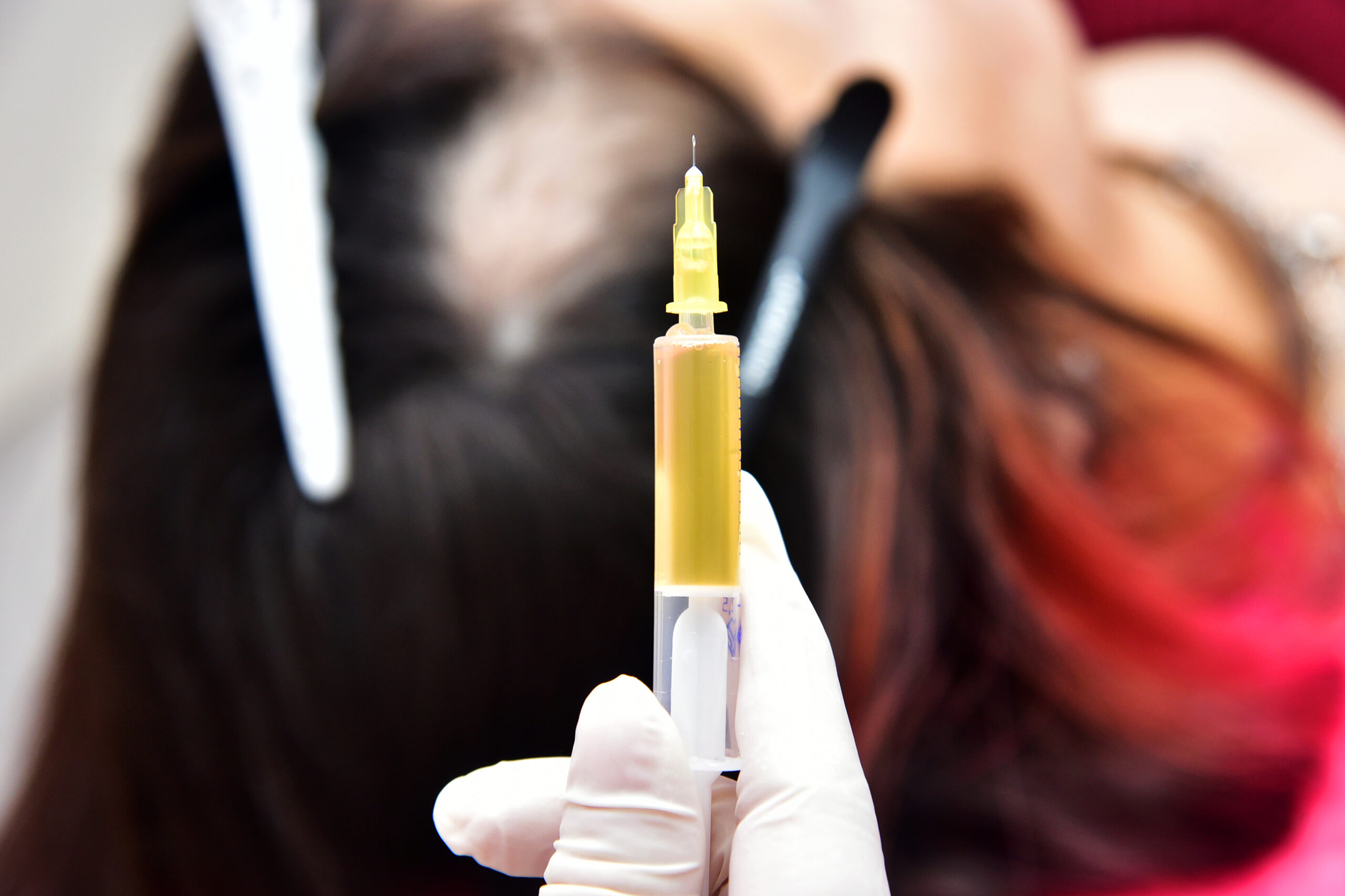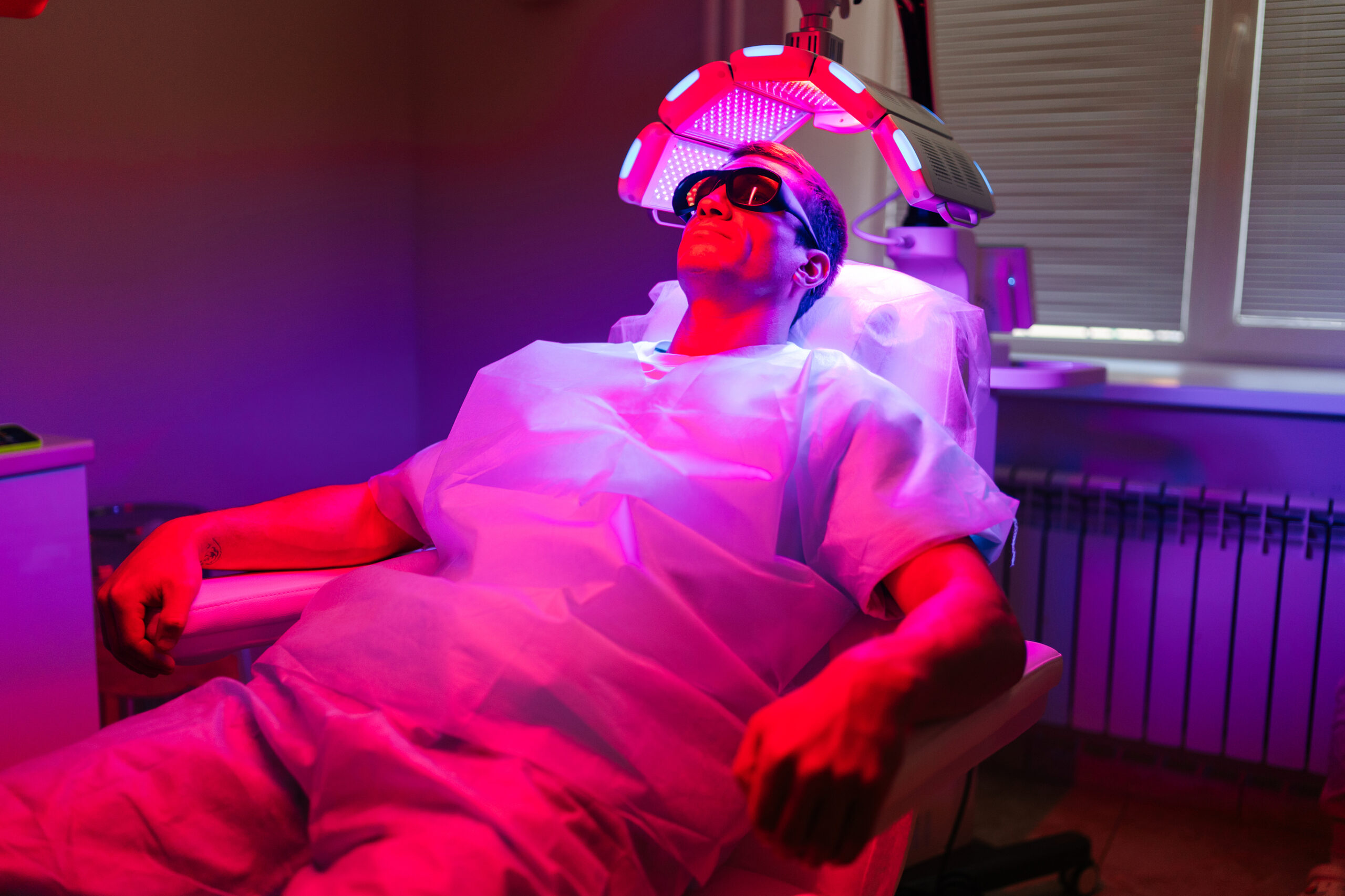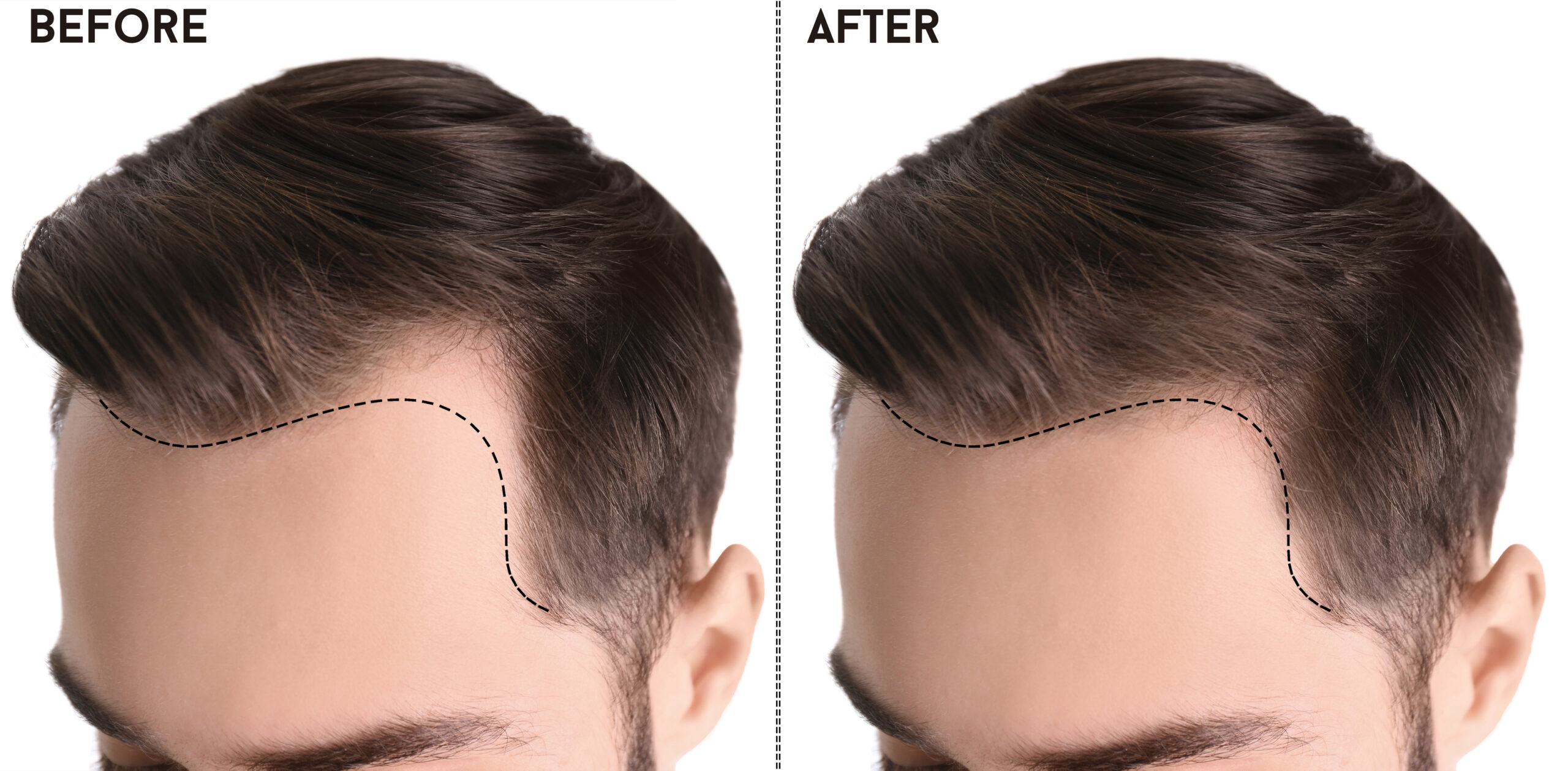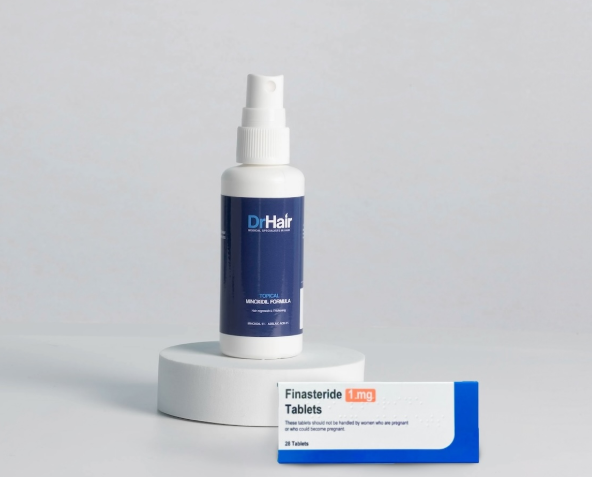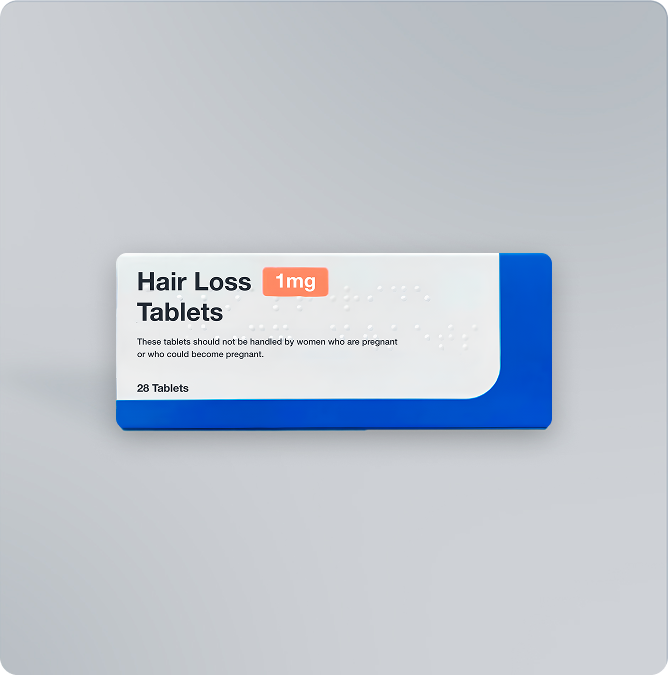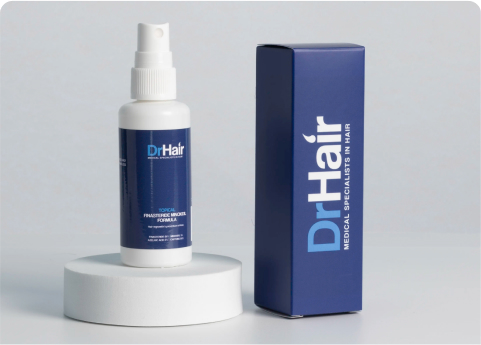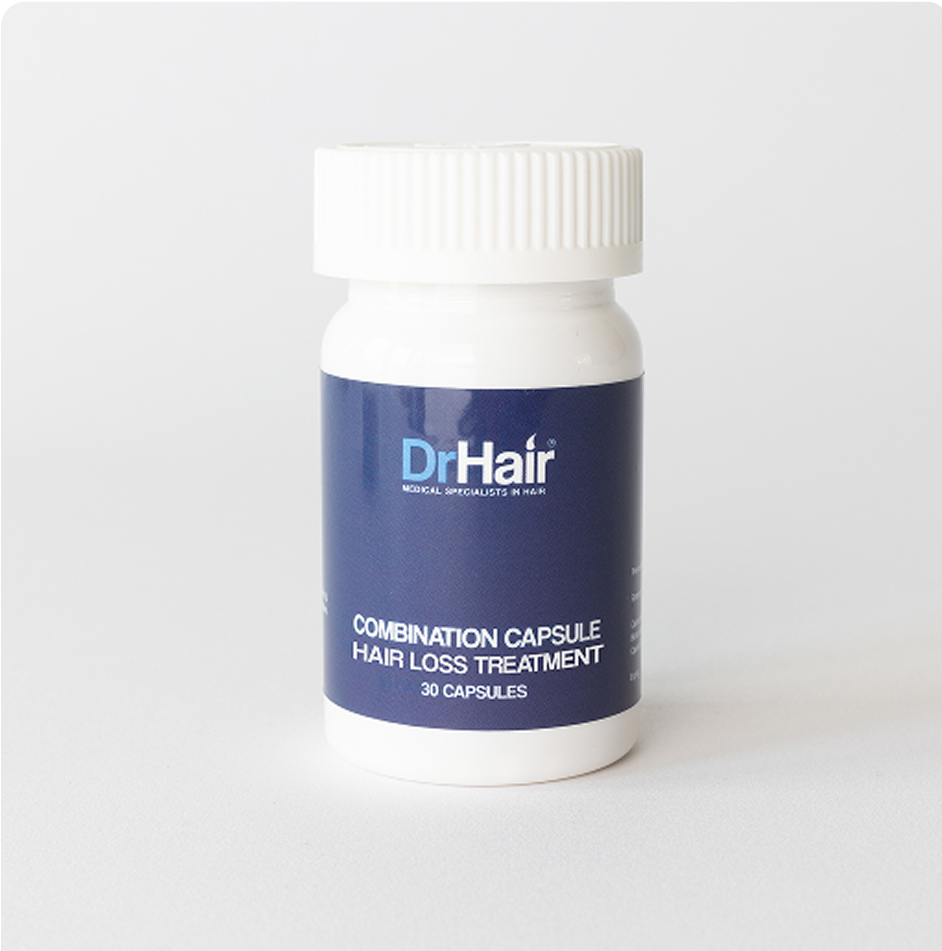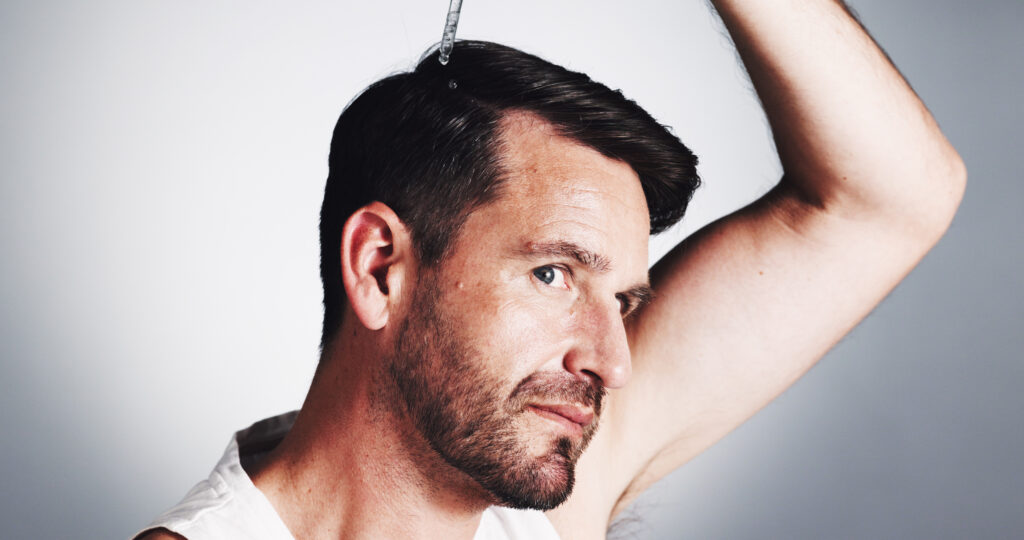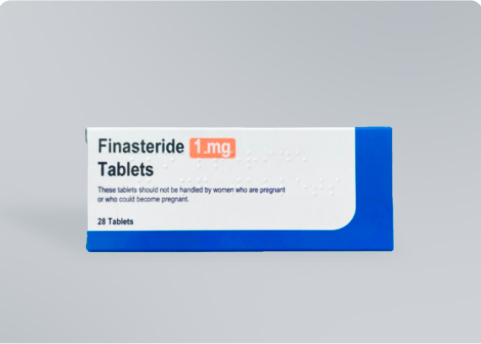You may have heard that more and more men are using dutasteride for their male pattern baldness. Research shows this medication is safe and very effective, as it can reduce up to 90% of your dihydrotestosterone (DHT) levels [1][2]. But which is better for hair loss: dutasteride or finasteride, a similar, but far more commonly prescribed hair loss drug?
This article will compare dutasteride vs finasteride in terms of effectiveness, safety, and costs, providing insight on the following topics:
- How dutasteride and finasteride work for hair loss
- Whether dutasteride is more effective than finasteride for hair growth
- The risks and side effects of dutasteride and finasteride
- How much dutasteride may cost in the UK, compared to finasteride
- Hair growth alternatives to dutasteride and finasteride
Table of Contents
- What are dutasteride and finasteride?
- How do dutasteride and finasteride work for hair growth?
- Which is more effective: dutasteride or finasteride?
- Risks and side effects of dutasteride vs finasteride
- How to reduce the side effects of dutasteride or finasteride
- Can women use finasteride or dutasteride?
- Does dutasteride cost more than finasteride?
- Alternatives to dutasteride and finasteride
- Are you looking for top-quality hair treatment?
- Frequently asked questions
What are dutasteride and finasteride?
Dutasteride and finasteride are two medications originally designed for treating an enlarged prostate (benign prostatic hyperplasia). Over time, researchers discovered that they were also effective in curbing hair loss and restoring hair growth in people with androgenetic alopecia [2][3]. They reduce the activity of an enzyme called 5-alpha reductase, so they are known as 5-alpha reductase inhibitors (5ARI) [4].
Most patients prefer taking oral dutasteride or finasteride tablets once a day for convenience. However, topical varieties are also available in several forms (solutions, gels, foams, sprays). While the effectiveness of topical and oral formulations seems to be similar, topical solutions are significantly less likely to produce systemic side effects, which generally makes them safer.
How do dutasteride and finasteride work for hair growth?
Finasteride and dutasteride use the same mechanism to reduce hair loss and stimulate your hair follicles for growth. They inhibit the activity of the enzyme 5-alpha reductase (5AR), which converts some of your naturally occurring testosterone into DHT [4].
DHT is a male hormone with an important role in sexual and reproductive function. However, when there is an excessive sensitivity to it, this hormone binds to androgen receptors in hair follicles, causing hair miniaturisation. Left untreated, this can lead to male pattern baldness (and contribute to female pattern baldness).
If the activity of the 5AR enzyme is inhibited, a smaller amount of testosterone is converted into DHT. This means less of this hormone will be available to bind to your hair follicles, allowing some of them to heal and produce healthy hair once more.
Which is more effective: dutasteride or finasteride?
Research shows that dutasteride is generally more effective than finasteride. That is because it can inhibit the activity of all 3 types of 5AR enzyme, while finasteride can only inhibit two of them [5][1]. This leads to dutasteride lowering DHT levels by over 90%, while finasteride only lowers them by about 70% [1].
Numerous studies have confirmed this effect, showing that dutasteride can provide increased hair density, count, and thickness in patients with androgenetic alopecia, compared to finasteride [1][4][6][7].
Study details:
A meta-analysis [1] performed in 2025 on 9 studies that compared the effectiveness of finasteride 1 mg and dutasteride 0.5 mg in patients with pattern baldness revealed that both medications were superior to placebo. However, dutasteride produced a significantly greater improvement in hair count and thickness, as well as a more favourable patient self-assessment of treatment results.
A 2014 study [4] involving 917 men with male pattern baldness that investigated the compared effectiveness of dutasteride and finasteride supports these findings. Patients who were treated with dutasteride 0.5 mg experienced superior hair count, thickness and proportion of terminal (non-miniaturised) hair shafts compared to those who received finasteride 1 mg, after both 12 and 24 weeks of treatment.
Similar results were also reported by a 2017 study [6] conducted on 90 men with male pattern baldness. Researchers divided participants into two groups: some were treated with dutasteride 0.5 mg and others with finasteride 1 mg. After 24 weeks, patients who received dutasteride had achieved, on average, a 10.3% improvement in hair count, compared to only 1.7% in those treated with finasteride. Moreover, those in the dutasteride group also experienced a greater reversal of hair miniaturisation.
Risks and side effects of dutasteride vs finasteride
While both medications are deemed generally safe, most studies show that dutasteride and finasteride side effects are similar in both nature and incidence rates [1][6][8]. Only one trial [7] with 31 patients found dutasteride to have a higher incidence of reported sexual side effects than finasteride., but this could be due to a sample effect.
It is not surprising that the serious side effects of finasteride and dutasteride are mostly the same, considering that these medications are both in the same class (5ARI inhibitors). Here are the main reported dutasteride and finasteride side effects in men [8][9]:
- Erectile dysfunction (impotence)
- Low sex drive
- Ejaculatory disfunction
- Rarely, dutasteride and finasteride may affect fertility
- Rarely, enlargement of the breast tissue in men (gynecomastia)
- Depressive symptoms, anxiety or, very rarely, suicidal thoughts
- Testicular pain
- Scalp rash or irritation
It should be pointed out that most of these adverse reactions occur in very few of the patients who use this medication (usually in those who are already predisposed by their genes or underlying conditions).
How to reduce the side effects of dutasteride or finasteride
The best and easiest way to reduce the side effects of finasteride or dutasteride is to use topical formulations. Only a very small quantity of the solution can penetrate your scalp and reach your bloodstream, which is too low to cause systemic side effects (such as sexual dysfunction or mood disorders) [10][11].
Other things you can do to stay safe while using either of these medications include:
- Always let your prescribing doctor know about any physical or mental health problems you have been experiencing and any medications you are taking.
- Take your hair loss medication exactly as prescribed.
- Be sure to store your medication in a cool, dry place.
- Check the expiration date on the bottle to make sure your medication is still safe and effective.
- Never take finasteride or dutasteride without a prescription.
Can women use finasteride or dutasteride?
It is not normally recommended for premenopausal women to use finasteride or dutasteride. Both medications can cause significant birth defects in case of pregnancy, as well as hormonal imbalances in female patients.
However, the small body of research that has been conducted on menopausal women with female pattern hair loss indicates that both these medications may help treat this condition. Just like in male pattern baldness, dutasteride is slightly more effective for women’s androgenetic alopecia [1].
Does dutasteride cost more than finasteride?
Yes, dutasteride tends to be somewhat more expensive and less available than finasteride (there are more kinds of generic finasteride available). In the UK, you can expect to pay, on average, £10 to £30 per month for your finasteride treatment, but around £20 to £50 for your monthly dutasteride.
However, that largely depends on whether you are buying brand or generic medication, on the provider you choose and on whether you opt for a several-month subscription service. For example, DrHair offers the most affordable rates on finasteride and you can get even further discounts by signing up to our 3 or 6 month subscription.
Alternatives to dutasteride and finasteride
If you would like to explore other hair loss treatment options, here are the best alternatives to finasteride and dutasteride you can get for androgenetic alopecia:
Minoxidil
Minoxidil is one of the most prescribed hair loss medications in the world, and it is also one of the two FDA and MHRA-approved hair growth treatments (alongside finasteride). It works by dilating the blood vessels in your scalp, allowing more oxygen and nutrients to reach your hair follicles [12]. This helps them produce stronger, healthier hair, curbing and sometimes reversing several types of alopecia, such as male and female pattern baldness, alopecia areata and telogen effluvium.
Platelet-rich plasma (PRP) treatment
This therapy relies on growth factors in your own blood to help heal and regenerate your hair follicles. It involves harvesting a small sample of blood from your arm, separating the PRP from the other blood fractions and injecting it into the thinning areas on your scalp. PRP contains many growth factors that stimulate follicle regeneration and help repair the blood vessels that nourish them, resulting in improved hair density [13].
Red light therapy
Focused red or near-infrared light on your scalp is absorbed through your skin, stimulating blood flow and optimising the activity of your cell mitochondria. This has been scientifically proven to help reduce hair loss and promote hair growth in people with androgenetic alopecia, alopecia areata and other hair loss conditions [14].
Hair transplant
Hair restoration surgery is the only permanent solution for androgenetic alopecia. It involves harvesting healthy hair follicles from the back of your head and implanting them into your balding spots. Since follicles on the back of your head are less sensitive to DHT, they are considerably less likely to become miniaturised after transplantation. That is why surgical hair restoration results are permanent in most cases [15].
Are you looking for top-quality hair treatment?
If you are searching for the most effective treatment for your androgenetic alopecia, DrHair has the solutions you need. Book an online consultation with our knowledgeable, doctor-led support team. They will assess your condition and recommend the right top-quality hair loss products. And if you choose a 3 or 6-month subscription, you can get substantial discounts.
Our proprietary topical DrHair Finasteride + Minoxidil Formula provides superior results to finasteride alone. Studies show this combination reduced male pattern baldness in 94% of participants within a year of consistent use [16]. Or, if you prefer oral finasteride, you can get it standalone or in a Finasteride (1mg) + Minoxidil 5% (60ml) combination. Our express delivery services can bring it to your doorstep in the shortest time, so you can be on your way to fuller, healthier hair as soon as possible.
Frequently asked questions
Would you like to find out more about finasteride and dutasteride? The answers to these frequently asked questions may provide the extra information you need.
Finasteride 1mg has been FDA and MHRA approved for male pattern baldness since 1997 [3]. Its effectiveness and safety profile have been thoroughly studied during the past decades.
Dutasteride, however, is not yet FDA or MHRA-approved and can only be prescribed off-label to treat alopecia. This does not mean this medication is not safe or effective. But it needs to be studied for a longer time on a larger number of patients before sufficient data can be gathered for it to receive approval.
Neither of these two medications is, however, approved for female pattern baldness at this time, as further research is needed to assess their safety and effectiveness for women. However, they can sometimes be prescribed off-label to post-menopausal patients.
While it is possible to use finasteride and dutasteride together, it would not likely increase the hair loss benefits of using dutasteride alone, as it provides sufficient DHT reduction by itself. Moreover, combining these two medications may increase your risk of developing unwanted side effects.
If you are looking for a helpful treatment combination, you may want to try finasteride and minoxidil together. While the finasteride reduces the DHT levels in your blood, the minoxidil improves blood flow to your hair follicles, providing them with the nourishment they need to grow stronger and healthier.
At this time, there are no reports of long-lasting side effects caused by dutasteride use that can be likened to post-finasteride syndrome. This may be because significantly fewer people use dutasteride than finasteride, and the occurrence is very rare.
However, there isn’t sufficient evidence of permanent finasteride side effects either. Some scientists attribute post-finasteride syndrome to the nocebo effect (fear of developing treatment side effects that tricks one’s mind into actually experiencing the dreaded symptoms) or to underlying health conditions [17].
Yes, you need a prescription from a medical professional to be able to buy finasteride or dutasteride. While finasteride can be prescribed directly for male pattern baldness, dutasteride will be prescribed off-label.


